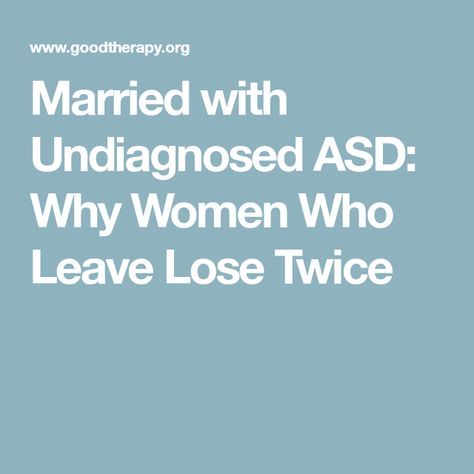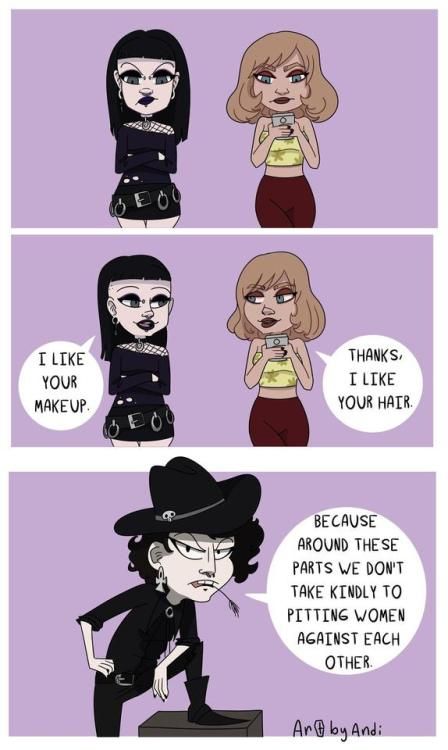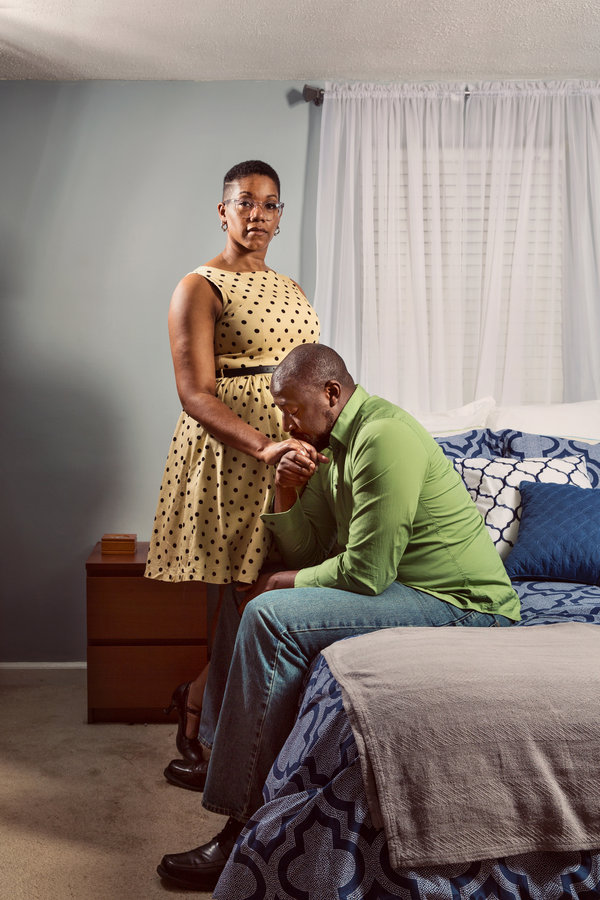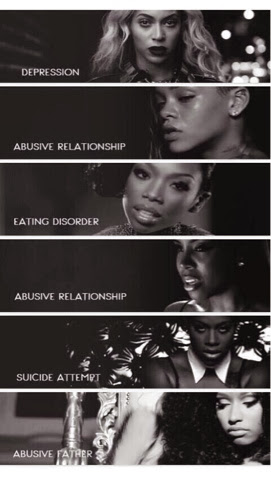Aspergers test for women
Online Test for Adult Autism
Share this page
Question 1
I prefer to do things on my own, rather than with others.
- Definitely Agree
- Slightly Agree
- Slightly disagree
- Definitely disagree
Question 2
I prefer doing things the same way - for instance my morning routine or trip to the supermarket
- Definitely Agree
- Slightly Agree
- Slightly disagree
- Definitely disagree
Question 3
I find myself becoming strongly absorbed in something – even obsessional
- Definitely Agree
- Slightly Agree
- Slightly disagree
- Definitely disagree
Question 4
I am very sensitive to noise and will wear earplugs or cover my ears in certain situations
- Definitely Agree
- Slightly Agree
- Slightly disagree
- Definitely disagree
Question 5
Sometimes people say I am being rude, even though I think I am being polite.
- Definitely Agree
- Slightly Agree
- Slightly disagree
- Definitely disagree
Question 6
I find it easy to imagine what characters from a book might look like.
- Definitely Agree
- Slightly Agree
- Slightly disagree
- Definitely disagree
Question 7
I find it easy to talk in groups of people
- Definitely Agree
- Slightly Agree
- Slightly disagree
- Definitely disagree
Question 8
I am more interested in finding out about ‘things’ than people
- Definitely Agree
- Slightly Agree
- Slightly disagree
- Definitely disagree
Question 9
I find numbers, dates and strings of information fascinating
- Definitely Agree
- Slightly Agree
- Slightly disagree
- Definitely disagree
Question 10
I prefer non-fiction books and films to fiction
- Definitely Agree
- Slightly Agree
- Slightly disagree
- Definitely disagree
Question 11
I find it upsetting if my daily routine is upset or changed
- Definitely Agree
- Slightly Agree
- Slightly disagree
- Definitely disagree
Question 12
It’s difficult for me to understand other people’s facial expression and body language
- Definitely Agree
- Slightly Agree
- Slightly disagree
- Definitely disagree
Question 13
I don’t have any problems making small talk with new people
- Definitely Agree
- Slightly Agree
- Slightly disagree
- Definitely disagree
Question 14
I notice very small changes in a person’s appearance
- Definitely Agree
- Slightly Agree
- Slightly disagree
- Definitely disagree
Question 15
When I was young I used to play lots of ‘let’s pretend’ or imaginary games
- Definitely Agree
- Slightly Agree
- Slightly disagree
- Definitely disagree
Question 16
I like collecting information about things I am interested in
- Definitely Agree
- Slightly Agree
- Slightly disagree
- Definitely disagree
Question 17
I like meeting new people
- Definitely Agree
- Slightly Agree
- Slightly disagree
- Definitely disagree
Question 18
People close to me say I talk about the same things repeatedly
- Definitely Agree
- Slightly Agree
- Slightly disagree
- Definitely disagree
Question 19
I find it easy to work out what people are thinking or feeling just by looking at their facial expressions
- Definitely Agree
- Slightly Agree
- Slightly disagree
- Definitely disagree
Question 20
New social situations make me feel anxious
- Definitely Agree
- Slightly Agree
- Slightly disagree
- Definitely disagree
Question 21
It’s important to me to carefully plan any activities I am going to do
- Definitely Agree
- Slightly Agree
- Slightly disagree
- Definitely disagree
Question 22
I find it hard to work out what people’s intentions are
- Definitely Agree
- Slightly Agree
- Slightly disagree
- Definitely disagree
Question 23
I would find it really hard to play imaginary games with children
- Definitely Agree
- Slightly Agree
- Slightly disagree
- Definitely disagree
Question 24
I am a good diplomat and can help ease difficult social or work situations
- Definitely Agree
- Slightly Agree
- Slightly disagree
- Definitely disagree
Question 25
I am often the last person to understand a joke
- Definitely Agree
- Slightly Agree
- Slightly disagree
- Definitely disagree
Question 26
I like doing things spontaneously
- Definitely Agree
- Slightly Agree
- Slightly disagree
- Definitely disagree
Question 27
If I am interrupted doing something I find it hard to get back to what I was doing before hand
- Definitely Agree
- Slightly Agree
- Slightly disagree
- Definitely disagree
Question 28
I notice patterns in things all the time
- Definitely Agree
- Slightly Agree
- Slightly disagree
- Definitely disagree
Question 29
I have some very strong interests and get upset if I can’t pursue them
- Definitely Agree
- Slightly Agree
- Slightly disagree
- Definitely disagree
Question 30
I can tell if someone I am talking to is getting bored
- Definitely Agree
- Slightly Agree
- Slightly disagree
- Definitely disagree
Question 1 of 30
When answering the above questions please consider how much the statements apply to you.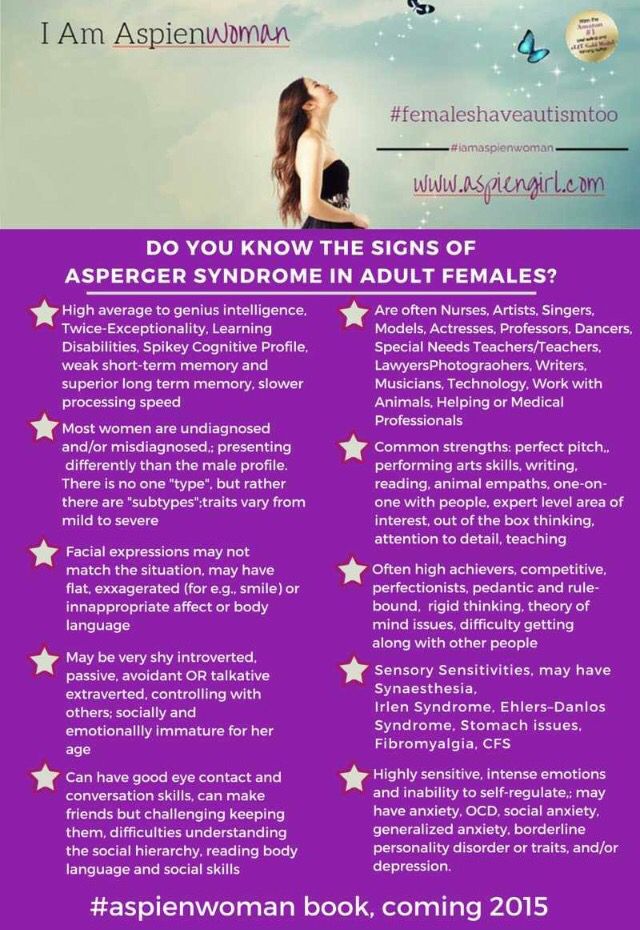
The above 30 questions may be useful to understand if you are experiencing some of the common behaviours and thoughts associated with being on the Autistic Spectrum. The questions are based on an evidence-based screening tool – the Autism Spectrum Quotient – but are indicative only and do not form a formal diagnosis.
References: S. Baron-Cohen, S. Wheelwright, R. Skinner, J. Martin and E. Clubley, (2001) The Autism Spectrum Quotient (AQ) : Evidence from Asperger Syndrome/High Functioning Autism, Males and Females, Scientists and Mathematicians Journal of Autism and Developmental Disorders 31:5-17
Need to talk:
0203 326 9160 0203 326 9160
Speak with a member of our friendly staff in complete confidence and arrange a consultation, either face-to-face or online.
Take another test
View all tests
We have online mental health quizzes for many conditions including ADHD, autism, anxiety, depression, PTSD, and more. Each one should take no longer than five minutes.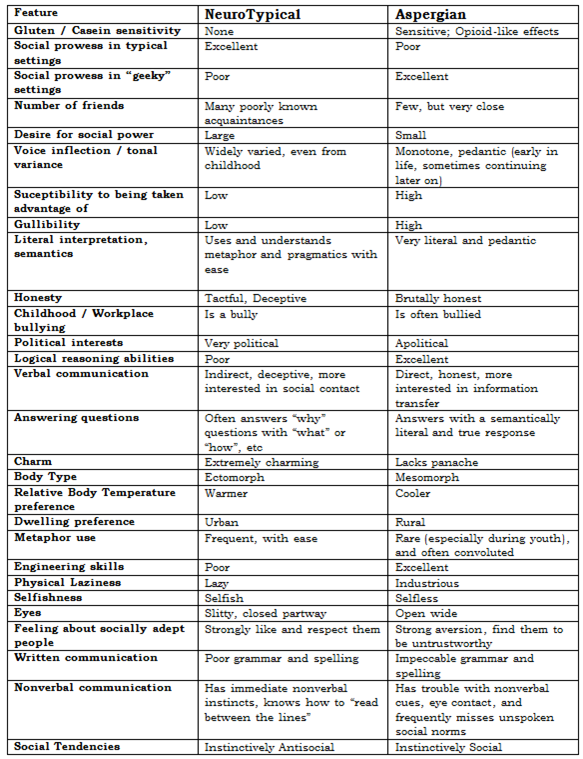
Samantha Craft's Unofficial Checklist: Females and Autism / Aspergers
This list is meant as a springboard for discussion and more awareness into the female experience with autism.
By Samantha Craft
Females with Autism: An Unofficial List
Section A: Deep Thinkers
- A deep thinker
- A prolific writer drawn to poetry
- *Highly intelligent
- Sees things at multiple levels, including her own thinking processes
- Analyzes existence, the meaning of life, and everything, continually
- Serious and matter-of-fact in nature
- Doesn’t take things for granted
- Doesn’t simplify
- Everything is complex
- Often gets lost in own thoughts and “checks out” (blank stare)
Section B: Innocent
- Naïve
- Honest
- Experiences trouble with lying
- Finds it difficult to understand manipulation and disloyalty
- Finds it difficult to understand vindictive behavior and retaliation
- Easily fooled and conned
- Feelings of confusion and being overwhelmed
- Feelings of being misplaced and/or from another planet
- Feelings of isolation
- Abused or taken advantage of as a child but didn’t think to tell anyone
Section C: Escape and Friendship
- Survives overwhelming emotions and senses by escaping in thought or action
- Escapes regularly through fixations, obsessions, and over-interest in subjects
- Escapes routinely through imagination, fantasy, and daydreaming
- Escapes through mental processing
- Escapes through the rhythm of words
- Philosophizes, continually
- Had imaginary friends in youth
- Imitates people on television or in movies
- Treated friends as “pawns” in youth; e.
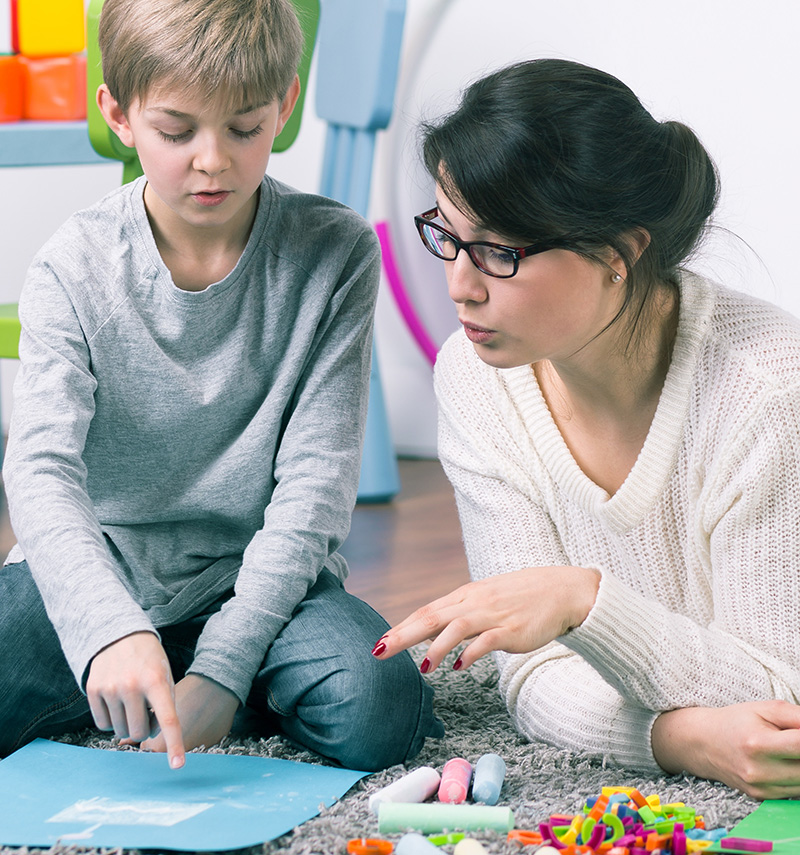 g., friends were “students” “consumers” “members”
g., friends were “students” “consumers” “members” - Makes friends with older or younger females more so than friends her age (often in young adulthood)
- Imitates friends or peers in style, dress, attitude, interests, and manner (sometimes speech)
- Obsessively collects and organizes objects
- Mastered imitation
- Escapes by playing the same music over and over
- Escapes through a relationship (imagined or real)
- Numbers bring ease (could be numbers associated with patterns, calculations, lists, time and/or personification)
- Escapes through counting, categorizing, organizing, rearranging
- Escapes into other rooms at parties
- Cannot relax or rest without many thoughts
- Everything has a purpose
Section D: Comorbid Attributes
- OCD (Obsessive Compulsive Disorder)
- Sensory Issues (sight, sound, texture, smells, taste) (might have Synthesia)
- Generalized Anxiety
- Sense of pending danger or doom
- Feelings of polar extremes (depressed/over-joyed; inconsiderate/over-sensitive)
- Poor muscle tone, double-jointed, and/or lack in coordination (may have Ehlers Danlos Syndrome and/or Hypotonia and/or POTS syndrome)
- Eating disorders, food obsessions, and/or worry about what is eaten
- Irritable bowel and/or intestinal issues
- Chronic fatigue and/or immune challenges
- Misdiagnosed or diagnosed with a mental illness
- Experiences multiple physical symptoms, perhaps labeled “hypochondriac”
- Questions place in the world
- Often drops small objects
- Wonders who she is and what is expected of her
- Searches for right and wrong
- Since puberty has had bouts of depression (may have PMDD)
- Flicks/rubs fingernails, picks scalp/skin, flaps hands, rubs hands together, tucks hands under or between legs, keeps closed fists, paces in circles, and/or clears throat often
Section E: Social Interaction
- Friends have ended friendship suddenly (without female with AS understanding why) and/or difficult time making friends
- Tendency to overshare
- Spills intimate details to strangers
- Raised hand too much in class or didn’t participate in class
- Little impulse control with speaking when younger
- Monopolizes conversation at times
- Brings subject back to self
- Comes across at times as narcissistic and controlling (is not narcissistic)
- Shares in order to reach out
- Often sounds eager and over-zealous or apathetic and disinterested
- Holds a lot of thoughts, ideas, and feelings inside
- Feels as if she is attempting to communicate “correctly”
- Obsesses about the potentiality of a relationship with someone, particularly a love interest or feasible new friendship
- Confused by the rules of accurate eye contact, tone of voice, proximity of body, body stance, and posture in conversation
- Conversation are often exhausting
- Questions the actions and behaviors of self and others, continually
- Feels as if missing a conversation “gene” or thought-filter
- Trained self in social interactions through readings and studying of other people
- Visualizes and practices how she will act around others
- Practices/rehearses in mind what she will say to another before entering the room
- Difficulty filtering out background noise when talking to others
- Has a continuous dialogue in mind that tells her what to say and how to act when in a social situation
- Sense of humor sometimes seems quirky, odd, inappropriate, or different from others
- As a child it was hard to know when it was her turn to talk
- Finds norms of conversation confusing
- Finds unwritten and unspoken rules difficult to grasp, remember, and apply
Section F: Finds Refuge when Alone
- Feels extreme relief when she doesn’t have to go anywhere, talk to anyone, answer calls, or leave the house but at the same time will often harbor guilt for “hibernating” and not doing “what everyone else is doing”
- One visitor at the home may be perceived as a threat (this can even be a familiar family member)
- Knowing logically a house visitor is not a threat, but that doesn’t relieve the anxiety
- Feelings of dread about upcoming events and appointments on the calendar
- Knowing she has to leave the house causes anxiety from the moment she wakes up
- All the steps involved in leaving the house are overwhelming and exhausting to think about
- She prepares herself mentally for outings, excursions, meetings, and appointments, often days before a scheduled event
- OCD tendencies when it comes to concepts of time, being on time, tracking time, recording time, and managing time (could be carried over to money, as well)
- Questions next steps and movements, continually
- Sometimes feels as if she is on stage being watched and/or a sense of always having to act out the “right” steps, even when she is home alone
- Telling self the “right” words and/or positive self-talk (CBT) doesn’t typically alleviate anxiety.
 CBT may cause increased feelings of inadequacy.
CBT may cause increased feelings of inadequacy. - Knowing she is staying home all day brings great peace of mind
- Requires a large amount of down time or alone time
- Feels guilty after spending a lot of time on a special interest
- Uncomfortable in public locker rooms, bathrooms, and/or dressing rooms
- Dislikes being in a crowded mall, crowded gym, and/or crowded theater
Section G: Sensitive
- Sensitive to sounds, textures, temperature, and/or smells when trying to sleep
- Adjusts bedclothes, bedding, and/or environment in an attempt to find comfort
- Dreams are anxiety-ridden, vivid, complex, and/or precognitive in nature
- Highly intuitive to others’ feelings
- Highly empathetic, sometimes to the point of confusion
- Takes criticism to heart
- Longs to be seen, heard, and understood
- Questions if she is a “normal” person
- Highly susceptible to outsiders’ viewpoints and opinions
- At times adapts her view of life or actions based on others’ opinions or words
- Recognizes own limitations in many areas daily, if not hourly
- Becomes hurt when others question or doubt her work
- Views many things as an extension of self
- Fears others opinions, criticism, and judgment
- Dislikes words and events that hurt animals and people
- Collects or rescues animals (often in childhood)
- Huge compassion for suffering (sometimes for inanimate objects/personification)
- Sensitive to substances (environmental toxins, foods, alcohol, medication, hormones, etc.
 )
) - Tries to help, offers unsolicited advice, or formalizes plans of action
- Questions life purpose and how to be a “better” person
- Seeks to understand abilities, skills, and/or gifts
Section H: Sense of Self
- Feels trapped between wanting to be herself and wanting to fit in
- Imitates others without realizing it
- Suppresses true wishes (often in young adulthood)
- Exhibits codependent behaviors (often in young adulthood)
- Adapts self in order to avoid ridicule
- Rejects social norms and/or questions social norms
- Feelings of extreme isolation
- Feeling good about self takes a lot of effort and work
- Switches preferences based on environment and other people
- Switches behavior based on environment and other people
- Didn’t care about her hygiene, clothes, and appearance before teenage years and/or before someone else pointed these out to her
- “Freaks out” but doesn’t know why until later
- Young sounding voice
- Trouble recognizing what she looks like and/or has occurrences of slight prosopagnosia (difficulty recognizing or remembering faces)
- Feels significantly younger on the inside than on the outside (perpetually twelve)
Section I: Confusion
- Had a hard time learning that others are not always honest
- Feelings seem confusing, illogical, and unpredictable (self’s and others’)
- Confuses appointment times, numbers, and/or dates
- Expects that by acting a certain way certain results can be achieved, but realizes in dealing with emotions, those results don’t always manifest
- Spoke frankly and literally in youth
- Jokes go over the head
- Confused when others ostracize, shun, belittle, trick, and betray
- Trouble identifying feelings unless they are extreme
- Trouble with emotions of hate and dislike
- Feels sorry for someone who has persecuted or hurt her
- Personal feelings of anger, outrage, deep love, fear, giddiness, and anticipation seem to be easier to identify than emotions of joy, satisfaction, calmness, and serenity
- Difficulty recognizing how extreme emotions (outrage, deep love) will affect her and challenges transferring what has been learned about emotions from one situation to the next
- Situations and conversations sometimes perceived as black or white
- The middle spectrum of outcomes, events, and emotions is sometimes overlooked or misunderstood (all or nothing mentality)
- A small fight might signal the end of a relationship or collapse of world
- A small compliment might boost her into a state of bliss
Section J: Words, Numbers, and Patterns
- Likes to know word origins and/or origin of historical facts/root cause and foundation
- Confused when there is more than one meaning (or spelling) to a word
- High interest in songs and song lyrics
- Notices patterns frequently
- Remembers things in visual pictures
- Remembers exact details about someone’s life
- Has a remarkable memory for certain details
- Writes or creates to relieve anxiety
- Has certain “feelings” or emotions towards words and/or numbers
- Words and/or numbers bring a sense of comfort and peace, akin to a friendship
(Optional) Executive Functioning & Motor Skills This area isn’t always as evident as other areas
- Simple tasks can cause extreme hardship
- Learning to drive a car or rounding the corner in a hallway can be troublesome
- New places offer their own set of challenges
- Anything that requires a reasonable amount of steps, dexterity, or know-how can rouse a sense of panic
- The thought of repairing, fixing, or locating something can cause anxiety
- Mundane tasks are avoided
- Cleaning self and home may seem insurmountable
- Many questions come to mind when setting about to do a task
- Might leave the house with mismatched socks, shirt buttoned incorrectly, and/or have dyslexia and/or dysgraphia
- A trip to the grocery store can be overwhelming
- Trouble copying dance steps, aerobic moves, or direction in a sports gym class
- Has a hard time finding certain objects in the house but remembers with exact clarity where other objects are; not being able to locate something or thinking about locating something can cause feelings of intense anxiety (object permanence challenges), even with something as simple as opening an envelope
This unofficial checklist can be copied for therapists, counselors, psychiatrists, psychologists, professors, teachers, and relatives, if Samantha Craft’s name and contact information remain on the print out.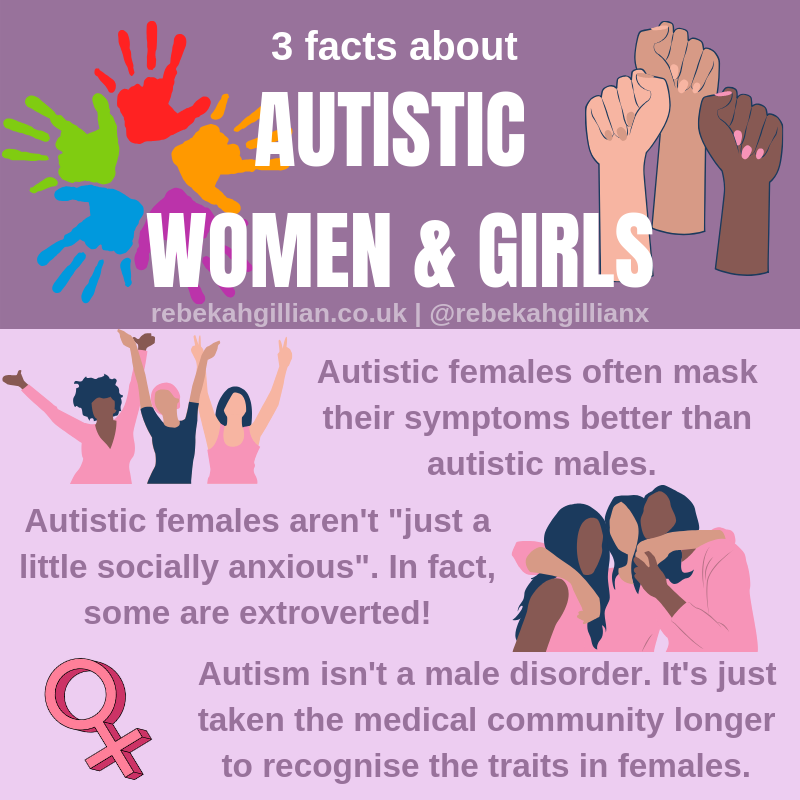 This list was created in 2012 and updated in May, 2016.
This list was created in 2012 and updated in May, 2016.
Disclaimer: This is my opinion and based on my experience after 12 years of researching about autism and being officially diagnosed with Asperger’s Syndrome. It is not meant to replace the DSM-V Autism Spectrum Disorder definition nor is this list meant to serve as an official diagnostic tool. Hundreds of women have used this list in conjunction with the DSM-IV or DSM-V and a professional mental health professional’s guidance. It is also based on 4.5 years of communicating almost daily with those that are diagnosed with autism and some that believe themselves to be on the spectrum. It is not all inclusive. Some will fit into categories and not be autistic/Asperian. This is meant as a springboard for discussion and more awareness into the female experience with autism.
This is an unofficial checklist created by an adult female with Asperger’s Syndrome (AS) who has a son with Asperger’s Syndrome.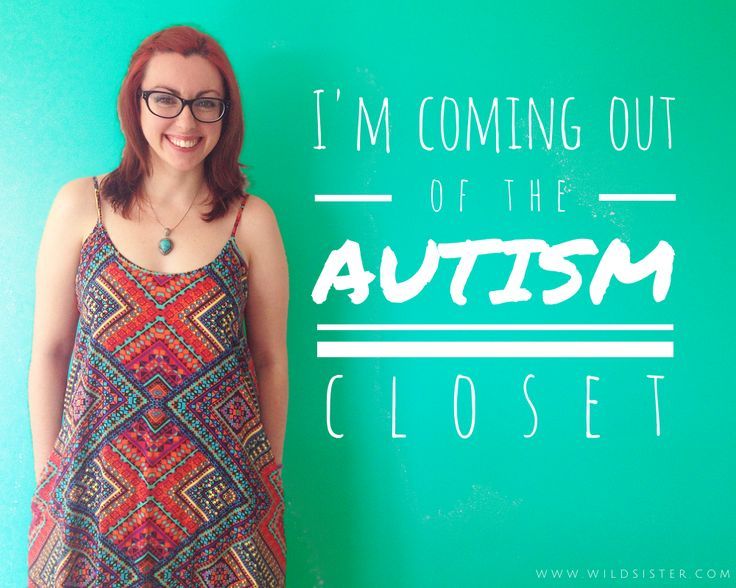 Samantha Craft has a Masters Degree in Education. Samantha Craft does not hold a doctorate in Psychiatry or Psychology. She has a life-credential as a result of being a female with Asperger’s Syndrome and being a parent of a child with Asperger’s Syndrome. She has created this list in an effort to assist health professionals in recognizing Asperger’s Syndrome in females—for in-depth information regarding females with AS refer to Craft’s book Everyday Aspergers.
Samantha Craft has a Masters Degree in Education. Samantha Craft does not hold a doctorate in Psychiatry or Psychology. She has a life-credential as a result of being a female with Asperger’s Syndrome and being a parent of a child with Asperger’s Syndrome. She has created this list in an effort to assist health professionals in recognizing Asperger’s Syndrome in females—for in-depth information regarding females with AS refer to Craft’s book Everyday Aspergers.
This post is courtesy of Samantha Craft. Her original post can be viewed here. Samantha Craft is author of the book Everyday Aspergers: A Journey on the Autism Spectrum. Take a look inside Everyday Aspergers.
Related Blog: Ten Ways to Help Your Autistic Loved One
Top Ten Signs You Have Aspergers
The Art of Autism realizes many people come to this page with the questions, Do I have Autism? or Do I have Aspergers? We recommend diagnosis by a professional. There are a couple of popular online quizzes which will give you an indication if you are on the spectrum:
- The Aspie Quiz
- Autism Spectrum Quotient online test
Header Art Work: Artist Lynda Lim
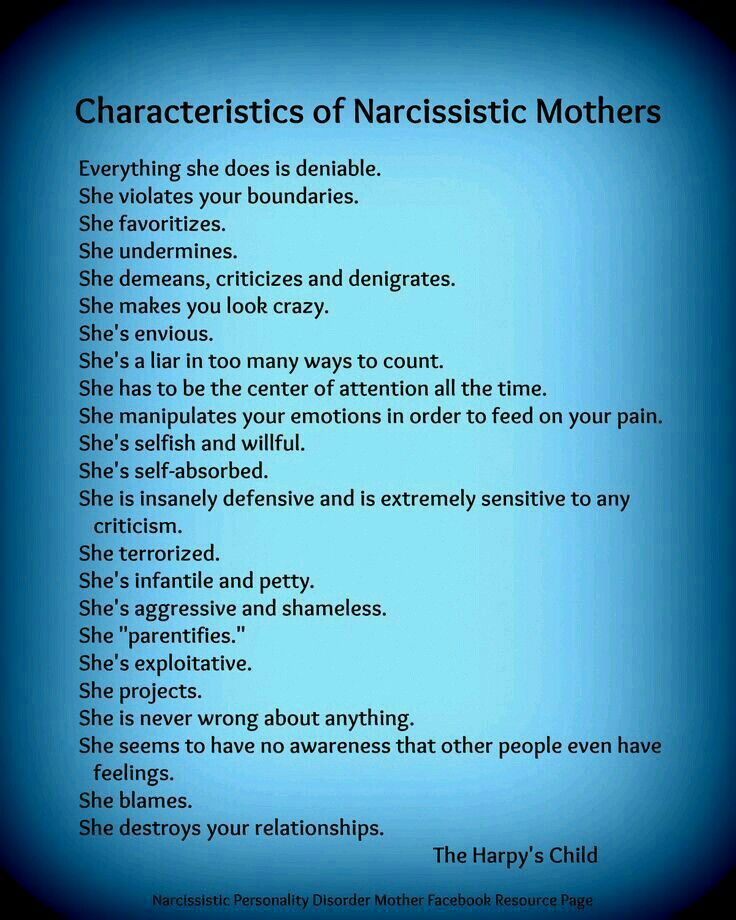

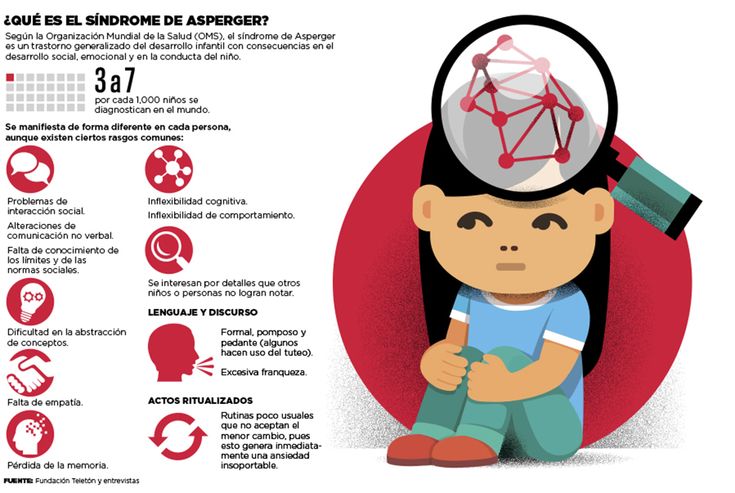
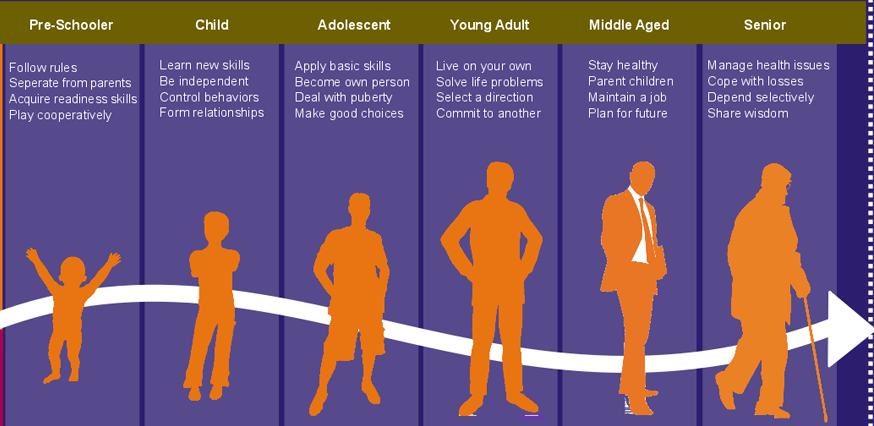
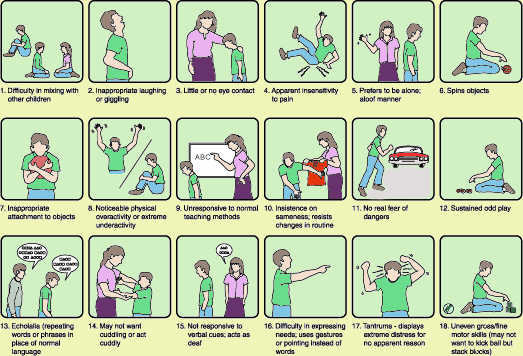
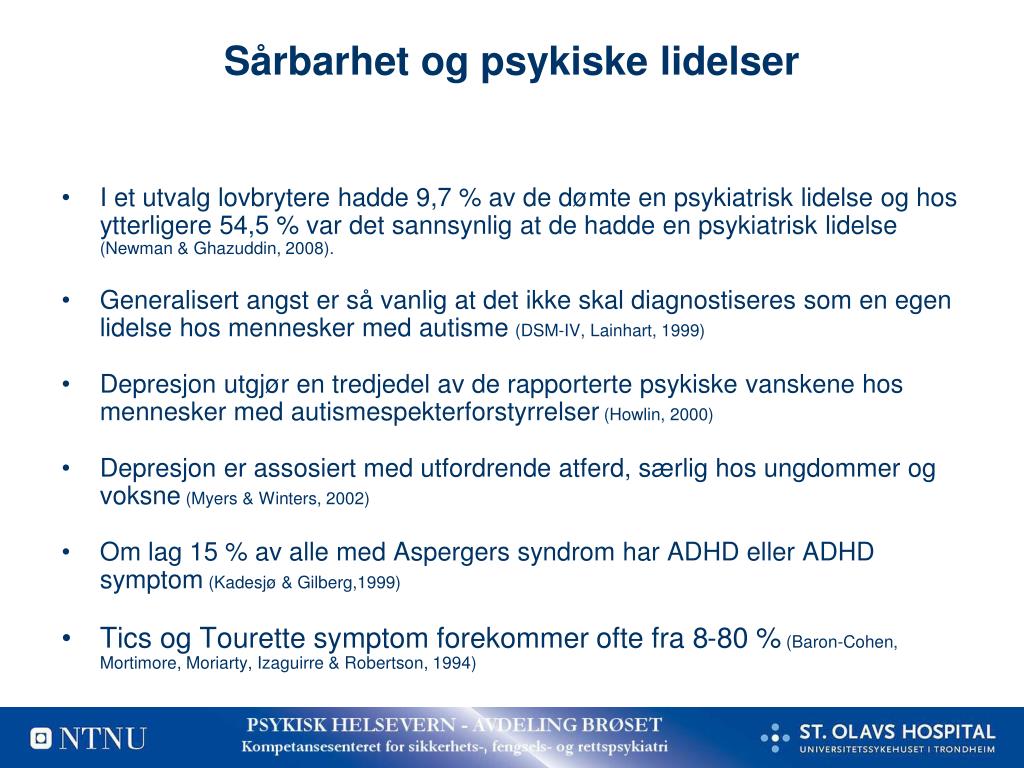
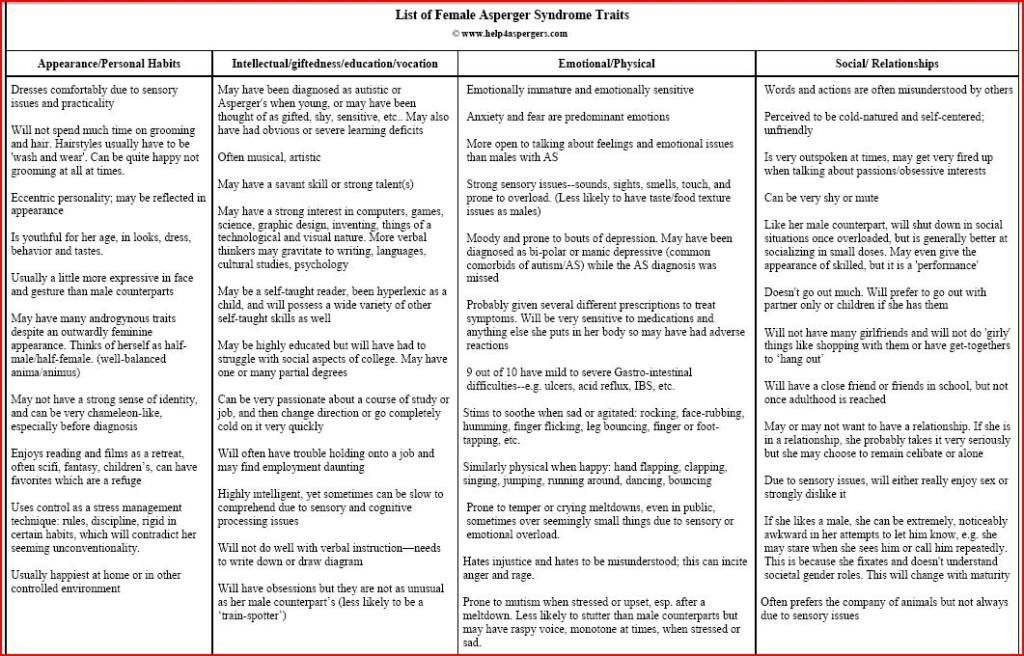 For this reason, if autism does not manifest itself too brightly, in childhood and even adolescence, a person does not get to a specialized doctor - a psychiatrist. But autism is not going anywhere. RAS stays with a person for life.
For this reason, if autism does not manifest itself too brightly, in childhood and even adolescence, a person does not get to a specialized doctor - a psychiatrist. But autism is not going anywhere. RAS stays with a person for life. 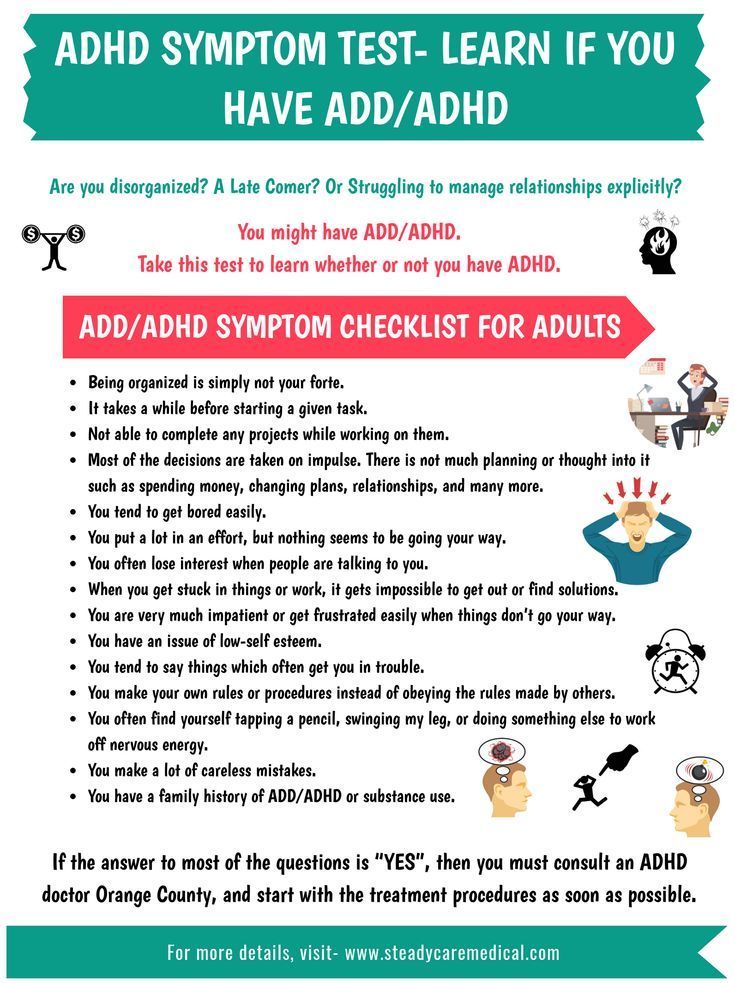 This test is also called the Asperger Syndrome test. It is believed that an extremely erudite person with a high IQ and a set of oddities in behavior is a classic representative of Asperger's Syndrome (AS). In fact, in modern medicine it is no longer accepted to separate AS from autism spectrum disorder, as it used to be.
This test is also called the Asperger Syndrome test. It is believed that an extremely erudite person with a high IQ and a set of oddities in behavior is a classic representative of Asperger's Syndrome (AS). In fact, in modern medicine it is no longer accepted to separate AS from autism spectrum disorder, as it used to be. 